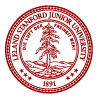ch 8 reading response
I’m not sure if I agree with Artful Design’s principle 8.4: Technology without poetry is but a blunt instrument. While the premise of course makes sense, since all human endeavors ultimately feed into the broader human experience, the wording seems too vague to actually delineate technology in a meaningful way. Is it possible to find an instance of technology that is not ultimately poetic? Take Amazon’s Mechanical Turk, a brute tool that seemingly removes the human aspect of its mission while capitalizing on humans completely. One can argue that there exists poetry in Amazon’s mission to scale human value, while trying to strip it away at the same time. Zooming out even more, I argue that everything humans make contains some aspect of poetry, because it is impossible to make something without designing it. So, when it is the case that something is designed, it is infused with some element of humanity, even in the most blunt sense. Why can we be sure, then, that this human bluntness is not also poetry?
While the threshold of what makes something poetic is up for debate, I do agree with the delineation between the humanist and the engineering aspect of building. It has been historically proven that optimizing for one does not always lead to the enhancement of the other, and that they are oftentimes on opposite ends of the prioritization spectrum. It is therefore important to be mindful of the trade-offs between the two, and to reflect on how we can contribute to a world in which the two grow together. To make this happen, I think a reframing of what is meant to be most efficient needs to take place. Optimal engineering does not exclude adherence to morality when the lives of those who are directly affected or harmed are considered as part of the larger optimization problem. As a result, the concept of “moral design” that Artful Design’s posits is incredibly important, but potentially too generous. Design that is not moral is simply incomplete design, and should not be given equal weight to design that is non-inclusive or harmful. We can see this by principle 8.11, which states that design is the embodied consciousness of technology. If this is the case, then morality and consideration for humans is a core tenet, and there is no such thing as good design that is not also moral design.

